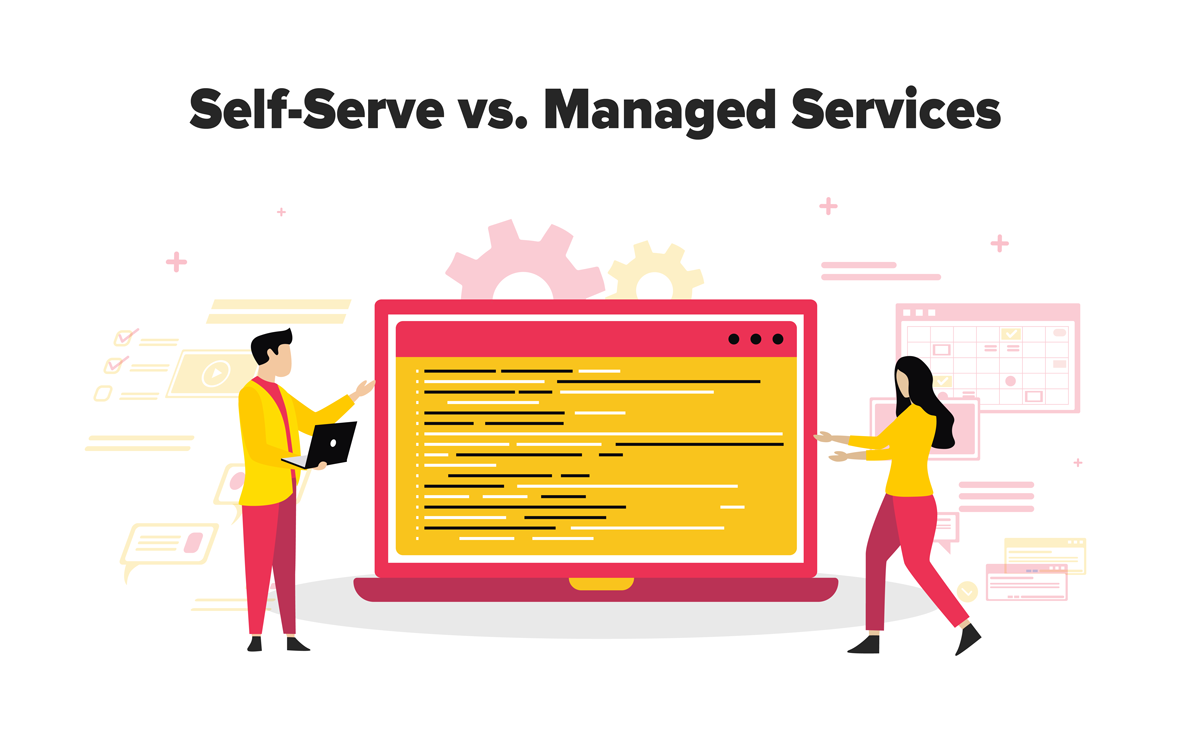Sticky Cube Desktop – an innovative ad format for maximizing monetization and UX
In today’s fast-paced digital advertising landscape, it’s more important than ever to strike the right balance between effective monetization and…

The Ad Tech industry provides Publishers with many options for leveraging the benefits of Header Bidding technology. In previous articles we highlighted the main differences and benefits of the client side, the server side, in-house and a 3rd-party solution. The final instalment of this Header Bidding discovery series, will now look to compare the two most common types of 3rd-party solutions to be found on the market, which are Self-Service and Managed Service. What follows will aim to consider these options and look to assess the pros and cons of each.

If you’ve been exploring in-house for some or all of your Programmatic activities, including Header Bidding management, a Self-Service Platform can be a first step in this direction; one which will remove the middlemen in the supply chain, along with their cut of the final paycheck.
For Publishers who manage their inventory and advertising sales in-house, and have people on board who spend their time analyzing and adjusting the advertising setup, a Self-Service solution will allow them to expand the number of demand partners they use, and to manage their settings and performance directly. A Self-Service solution will facilitate any profitable and effective Header Bidding setup creation. At the same time, Publishers will know exactly what is happening on their website at all times.
One of the primary benefits of a Self-Service Header Bidding solution is the possibility of hands-on management. Publishers using this kind of solution have direct access to their platform setting. This means that they can enable and optimize specific platforms on their own terms. There is no black-box component here, where they would otherwise have to simply trust the solution maker to make good decisions and report honest numbers. And this takes us to another notable benefit of the Self-Service solution, and that is transparency.
Since the publication of ANA’s landmark transparency report in 2016, both Publishers and Advertisers have been calling for increased transparency and control over advertising activities. What is more, an additional push towards supply/demand optimization was made in the wake of the latest ISBA report, which stated that only 51% of advertising budgets reach the Publishers’ coffers, with 15% of the spend being unaccounted for.

A Self-Service solution will of course not solve these issues entirely, but the solution will always deliver greater transparency. Access to real-time reporting and analytics provides Publishers with the data they need to understand how specific SSPs within their Header Bidding are performing. Especially if they have the opportunity to use their own created accounts as opposed to those created with resellers. In this way, Publishers can access the data directly, instead of receiving reports from a third-party, who may just choose to present results through rose-colored lenses.
You will also be able to receive payments straight from the SSPs and not from a single company aggregating many revenue sources, which is surely much safer in these uncertain times, especially if the company is not on a firm financial footing.
If cost is a concern, then Self-Service can also be a better option. It will never be free, as the company who develops and maintains it on an ongoing basis will be drawing down fees, but Self-Service platforms tend to be cheaper than Managed Service options; in part because some of the effort and the work remains on the side of the buyer.
A notable drawback to the Self-Service option is the availability of talent. Smaller Publishers may simply lack the in-house capabilities or the necessary knowledge-base to handle the required management tasks despite having access to great tools.
People can be hired, or current employees can be trained to use the tools, but the costs and benefits will have to be recalculated under such circumstances, as at the end of day it may not be efficient to hire another person, or refocus the activities of your current employees, particularly if the additional revenue created by Header Bidding cannot justify the outlay. In that case, it is much easier to outsource this part of the work to a Managed Service provider.
One of the toughest aspects of Programmatic monetization is keeping up with the terminology, acronyms and ongoing industry changes. This is where Managed Service comes to the fore.
Managed Services may be offered by vendors in the Ad Tech demand chain. These firms can fully manage the Header Bidding part of your monetization business. For Publishers who don’t have either time or the in-house talent to build a customized tool; or even set up and maintain a 3rd party product, Managed Services can be a viable option.
The two primary advantages of a Managed Service is firstly the Client (Publisher) not having to do the heavy lifting, apart from involvement in the implementation phase. Secondly, there is the knowledge pool of the solution-provider team managing the Header Bidding stack.
This team should be able to convey a deep knowledge both of the platforms they are using and of the tips and tricks necessary for leveraging the best possible performance. And this knowledge should extend beyond Header Bidding to the overall Programmatic monetization landscape. Their expertise and recommendations can surely help optimize performance and avoid the mistakes and losses associated with the learning curves and trial periods typical for building in-house tools or using the Self-Service option.
The convenience is all too clear. Plug the tags into your ad server and the page head, and let the other company take care of the rest. That is why Managed Services are appealing, especially to Publishers, who are often low on time, and may not have the resources to source talent with the necessary skill sets. Indeed, sometimes 3rd-party solutions are the Publishers’ only chance of having Header Bidding. But in many cases, it is simply the most efficient option.

As it was with all the discussed options related to Header Bidding, Managed Services also have their drawbacks. Publishers are frequently concerned about the excessive fees, often called the Ad Tech Tax, which can eat away at revenue gains – usually to the tune of 10 to 20%. Typically, a solution provider will charge Publishers a percentage of the acquired net revenue; but there are solution providers who offer other kinds of remuneration models, such as a CPM-based charge, one that depends on the scale of impressions which goes through the tool.
Another downside of Managed Services is the lack of transparency. By allowing another company to call the shots on the scope of SSPs and their settings, Publishers are losing the transparency that is offered by Self-Service Header Bidding solutions. The company managing these settings will also be providing revenue reports, which in most of the cases will not be the numbers straight from the platforms. For transparency-sensitive Publishers or their accounting divisions, they will want to avoid a situation where a partner is providing the technology, and overseeing the work being done.
Header Bidding technology is here to stay for the foreseeable future, and that is despite the dark clouds which were hanging over its head when Google announced the move to First-Price Auction and the introduction of Open Bidding. Its benefits for Publishers remain innumerable.
A decision about the optimal model for this tech will be crucial for your company in the years to come. Whatever you choose, our Yieldbird Team will always be happy to provide you with a demo of our solutions; and assist you in the evaluation of other solutions which you may be considering.

Karol Jurga
Chief Revenue Officer
See it in action.